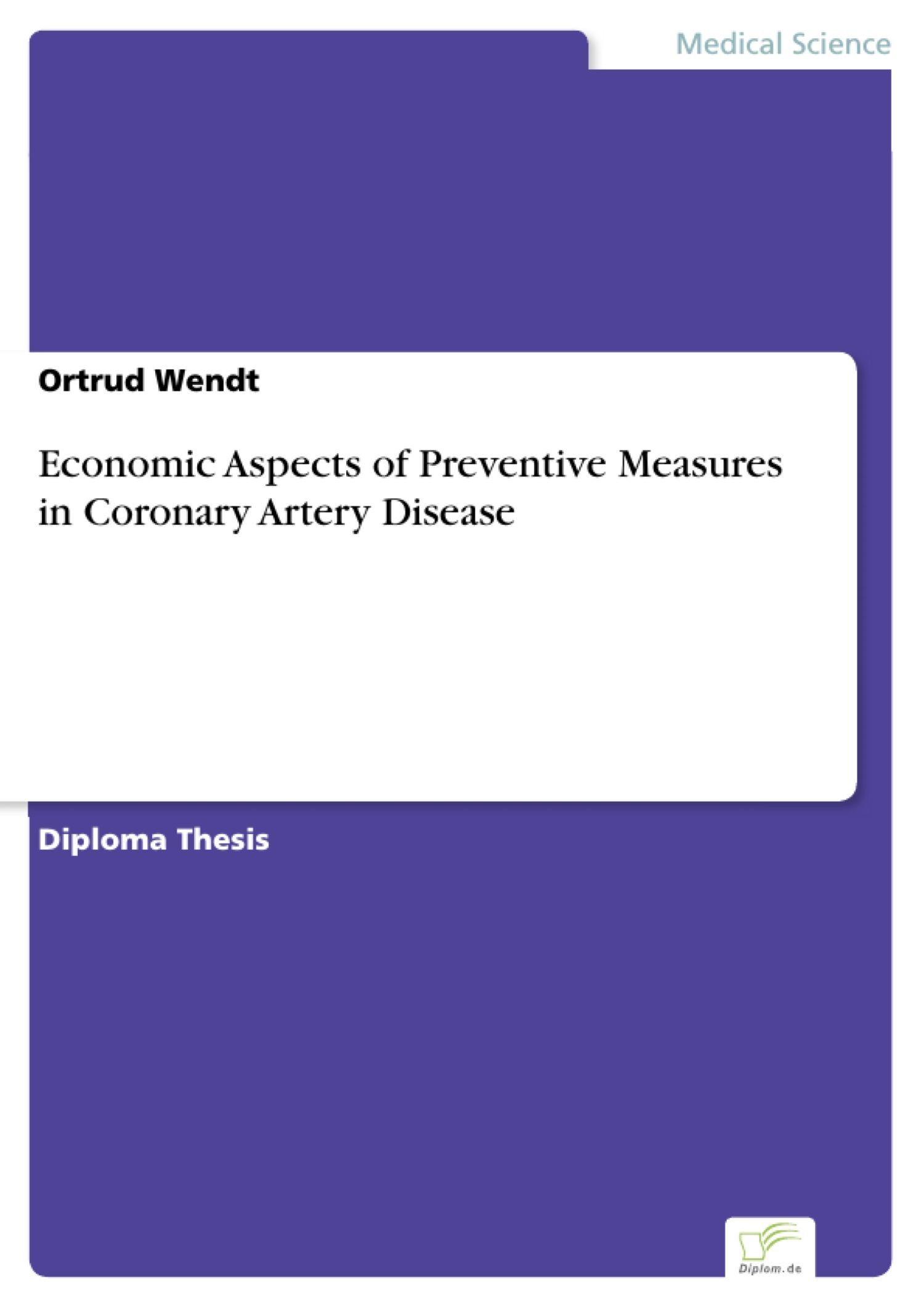Economic Aspects of Preventive Measures in Coronary Artery Disease
| Auflage | 1. Auflage, 1997 |
| Verlag | diplom.de |
| ISBN | 9783832402365 |
Sofort zum Download (Download: PDF)
Produktbeschreibung
Inhaltsangabe:Abstract: An ounce of prevention is worth a pound of cure. Rarely are there any objections to this old proverb. Its significance is underscored by the fact that the Major causes of death today are the degenerative, chronic diseases of civilization. Abundant evidence has been accumulated that these diseases can often be prevented. However, the appeal of prevention lies not only in its ability to reduce suffering from disease but also in its assumed power to reduce the costs of health care. At first sight it appears that promoting health and preventing disease would easily rehabilitate the health care system, granting prevention a prominent spot an the health policy agenda. For example in Germany, prevention in the form of health check-ups was introduced to the catalogue of services to be offered by health insurance companies in 1989. Yet, concerns have been raised that prevention may not reduce but rather add to the costs of health care. Especially in the case of prevention of chronic diseases, death or sickness can only be postponed but never avoided. Thus, a careful analysis of all the effects of preventive measures is necessary to assess their full economic consequences. Cardiovascular diseases, primarily coronary artery disease and stroke, account for the majority of deaths in industrialized countries. In the United States these diseases kill nearly as many Americans as all other diseases combined and are also among the leading causes of disability. The aggregate cost of coronary artery disease (CAD) in the United States is enormous, costing the country between 50 and 100 billion dollars per year for medical treatment and lost wages. Nonetheless, over the past two decades, the mortality from cardiovascular disease has declined dramatically: 40 per-cent for coronary artery disease. Major contributions to this decline came from risk factor reduction and changes in lifestyles. Moreover, new technology, improved pharmacology as well as better surgical techniques contributed to this decline. Risk factor reduction and changes in lifestyle are preventive measures in coronary artery disease with a straightforward appeal. Preventing the disease not only means avoiding the pain and suffering of the individual but also avoiding the risk of irreversible consequences and permanent damage. In addition to these obvious benefits, the costs of many preventive measures, for example screening tests, appear to be very small. Nevertheless, the [...]
